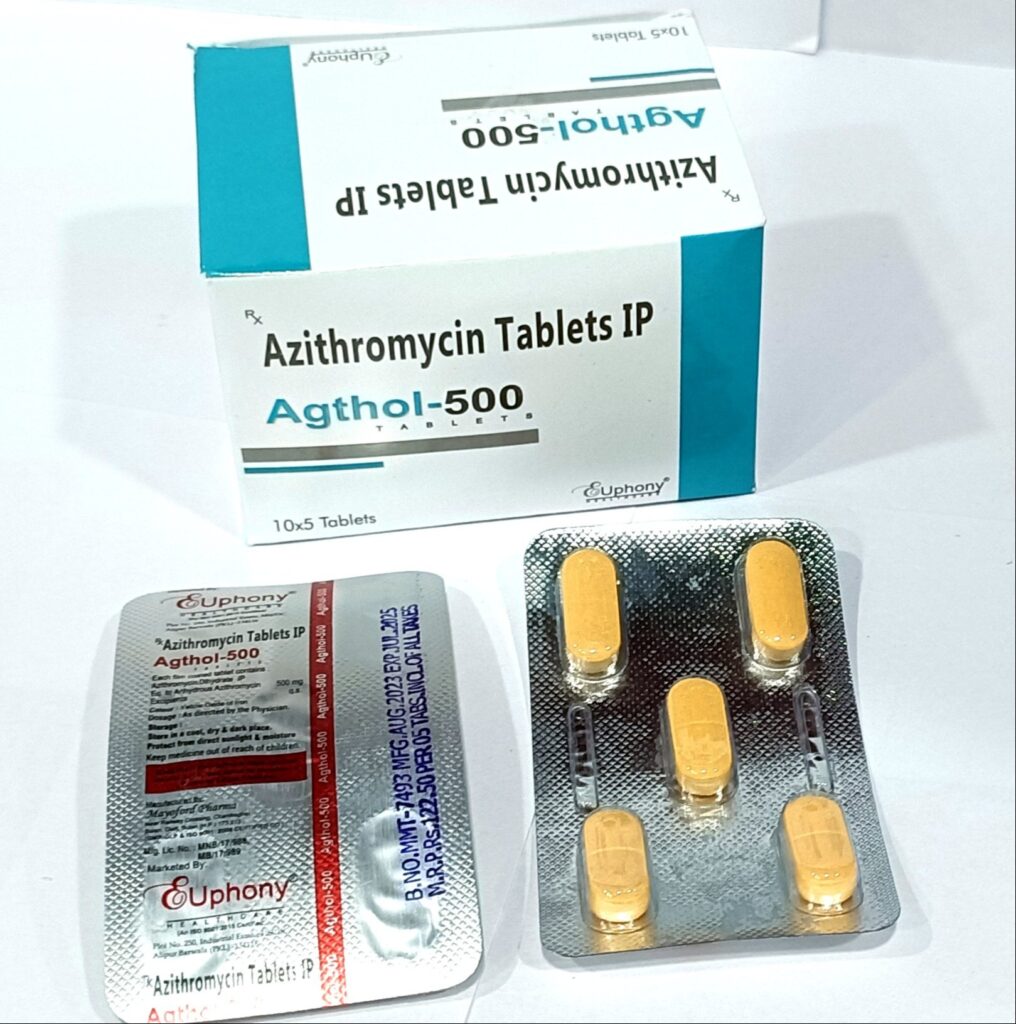Azithromycin is a commonly prescribed antibiotic that belongs to the macrolide class. It is widely used around the world due to its broad-spectrum activity, convenient dosing, and relatively low side effect profile. When considering whether azithromycin is a “strong” antibiotic, it’s important to clarify what is meant by “strong.” In the context of antibiotics, “strong” can refer to the spectrum of bacterial coverage, the severity of infections it can treat, its potency, or its ability to resist degradation by bacterial enzymes. This article will explore azithromycin’s characteristics in detail to help determine whether it qualifies as a “strong” antibiotic in various senses of the term.

Overview of Azithromycin
Azithromycin was first approved for medical use in the 1980s. It is a derivative of erythromycin, the original macrolide antibiotic, but with structural modifications that make it more stable in acidic environments and provide a longer half-life. It is available in oral and intravenous formulations and is commonly prescribed for respiratory tract infections, certain sexually transmitted infections (STIs), and other bacterial infections.
Azithromycin works by binding to the 50S ribosomal subunit of bacterial cells, inhibiting protein synthesis. This action is bacteriostatic, meaning it stops bacteria from growing and reproducing, rather than killing them outright (which would be bactericidal). However, in some cases, especially at high concentrations or against specific bacteria, azithromycin can exhibit bactericidal activity.
Spectrum of Activity
Azithromycin is considered a broad-spectrum antibiotic, which means it is effective against a wide variety of bacterial pathogens. Its spectrum includes:
Gram-positive bacteria: Such as Streptococcus pneumoniae and Streptococcus pyogenes.
Gram-negative bacteria: Including Haemophilus influenzae, Moraxella catarrhalis, and Neisseria gonorrhoeae.
Atypical pathogens: Such as Mycoplasma pneumoniae, Chlamydia trachomatis, and Legionella pneumophila.
These organisms are often implicated in respiratory infections, skin infections, and sexually transmitted diseases. The inclusion of atypical pathogens in its spectrum is one reason azithromycin is considered strong, especially for respiratory illnesses and STIs.
However, azithromycin is not effective against all types of bacteria. It has limited activity against certain anaerobes and Enterobacteriaceae, and it is generally not used to treat serious infections caused by organisms like Pseudomonas aeruginosa or Enterococcus species. Additionally, resistance to azithromycin has been increasing in some regions, which can limit its effectiveness.
Pharmacokinetics and Dosing
One of the reasons azithromycin is seen as particularly useful, and by some measures “strong,” is its favorable pharmacokinetic profile:
Long half-life: Azithromycin has a very long half-life (up to 68 hours), which allows for once-daily dosing and shorter treatment courses.
Tissue penetration: It accumulates in tissues and phagocytic cells, which helps it reach the site of infection more effectively.
Post-antibiotic effect: Even after serum levels drop, the drug continues to exert an effect on bacterial growth, which adds to its perceived strength.
A typical course of azithromycin may be as short as three to five days, which improves patient compliance and contributes to its popularity among prescribers and patients.
Clinical Uses
Azithromycin is used to treat a variety of infections, many of which are common and can be treated effectively without hospitalization:https://todayliv.com/what-is-herbal-medicine-and-its-uses/
Respiratory tract infections: Including community-acquired pneumonia, bronchitis, and sinusitis.
STIs: Such as chlamydia and gonorrhea.
Skin and soft tissue infections: Particularly those caused by susceptible Streptococcus and Staphylococcus species.
Ear infections: Especially in children.
Traveler’s diarrhea: In cases caused by susceptible bacteria.
Azithromycin is often chosen for its convenience and relatively low side effect profile, especially in outpatient settings. It is also frequently used in combination therapies, such as with hydroxychloroquine during early studies of COVID-19 (though this use has since been discouraged based on lack of efficacy and potential cardiac side effects).https://todayliv.com/what-is-herbal-medicine-and-its-uses/
Strength in Context
To determine whether azithromycin is a “strong” antibiotic, we need to consider several aspects:
- Potency Against Target Pathogens
Azithromycin is highly effective against many of the pathogens it targets. For example, it remains one of the first-line treatments for Chlamydia trachomatis infections. In this sense, it is indeed potent and reliable.
- Spectrum of Coverage
Its broad-spectrum activity against gram-positive, gram-negative, and atypical bacteria makes it versatile. While it doesn’t cover every type of bacteria (e.g., MRSA or Pseudomonas), its broad applicability in outpatient medicine is a strength.
- Ease of Use
The long half-life and simple dosing regimen (often once a day for 3-5 days) make it strong from a practical and patient adherence standpoint.
- Resistance Patterns
This is where azithromycin’s strength has been waning. Increasing bacterial resistance, especially among Streptococcus pneumoniae and Neisseria gonorrhoeae, has raised concerns. Resistance reduces the antibiotic’s effectiveness and can lead to treatment failure.
- Severity of Infections Treated
Azithromycin is not generally used for life-threatening or hospital-acquired infections, which are typically treated with more potent or broad-spectrum antibiotics such as piperacillin-tazobactam, vancomycin, or carbapenems. So, in this context, azithromycin is not considered a “strong” antibiotic.
Comparisons to Other Antibiotics
When compared to antibiotics like amoxicillin, doxycycline, or erythromycin, azithromycin offers several advantages in terms of dosing and spectrum. However, compared to heavy-duty antibiotics used in intensive care (e.g., meropenem or linezolid), azithromycin is not in the same league in terms of power against resistant or hospital-acquired organisms.
Additionally, the fact that azithromycin is bacteriostatic rather than bactericidal in most cases is a limitation when treating severe infections.
Side Effects and Safety
Azithromycin is generally well tolerated. Common side effects include:
Gastrointestinal upset (nausea, diarrhea)
Headache
Dizziness
Rare but serious side effects include:
QT prolongation and arrhythmia
Liver toxicity
Allergic reactions
Compared to many other antibiotics, the side effect profile is relatively mild, which contributes to its widespread use. However, in patients with cardiac risks, its potential to prolong the QT interval must be considered.
Conclusion
Azithromycin is a valuable antibiotic with many strengths: it has a broad spectrum of activity, excellent tissue penetration, a long half-life, and convenient dosing. It is particularly strong in outpatient settings for treating respiratory tract infections, STIs, and certain skin infections. Its activity against atypical bacteria also makes it unique among commonly prescribed antibiotics.